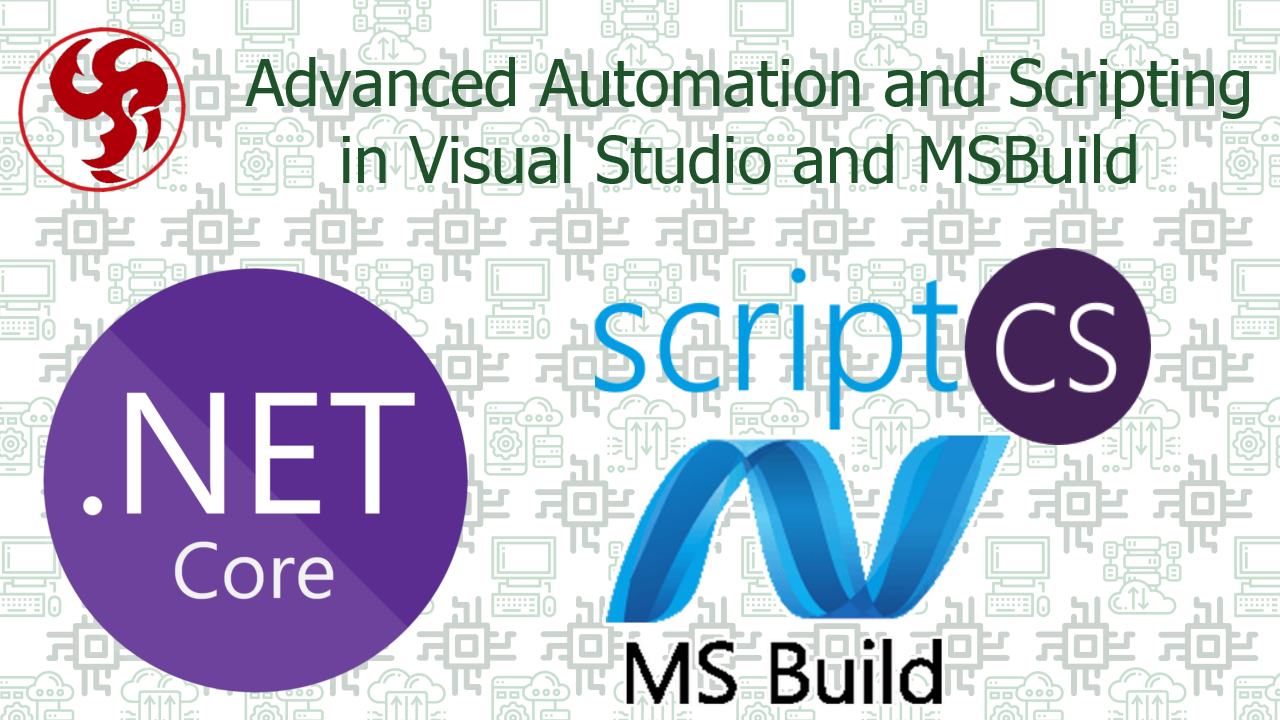Advanced Automation and Scripting in Visual Studio and MSBuild
⚙️ Advanced Automation and Scripting in Visual Studio and MSBuild with Custom Extensions and TaskFactory
🧭 Introduction
In modern .NET development, automation is no longer optional — it's essential. Whether you're working on enterprise-scale applications or small reusable libraries, automating build processes, validations, and code generation can dramatically improve development speed, consistency, and quality.
While most developers are familiar with basic MSBuild configurations and post-build events, the true power of the .NET ecosystem lies in its extensibility. This article explores advanced automation and scripting techniques using Visual Studio and MSBuild, specifically through custom build tasks, TaskFactory, and Visual Studio extensions. These tools allow you to take full control over your build pipeline and IDE behavior in a maintainable and scalable way.
🔧 Why MSBuild?
MSBuild (Microsoft Build Engine) is the heart of the .NET build system. It orchestrates how your code is compiled, linked, packaged, and deployed.
Unlike traditional scripting tools, MSBuild understands the structure of .NET projects and solutions. It uses XML-based project files, supports conditional logic, item metadata, and targets/tasks — making it a highly flexible and declarative build platform.
Its tight integration with Visual Studio ensures that every time you hit "Build", you're executing a predictable and extensible pipeline.
🚀 Common Automation Scenarios
Let’s begin with common automation goals many teams implement using MSBuild or external tools:
- 📁 Copying resource files after build.
- 🔀 Transforming configuration files per environment.
- 🧪 Running static code analysis or formatters.
- 🧬 Code generation (from OpenAPI, GraphQL, YAML, etc).
- 🏷️ Embedding version metadata during CI/CD.
- 🛡️ Enforcing naming conventions or folder structures.
While some of these can be achieved with post-build events or CLI scripts, MSBuild provides a more robust and reusable way to integrate these steps directly into the project structure.
🛠️ Anatomy of a Custom MSBuild Task
A Task in MSBuild is a unit of executable code (usually C#) that performs a specific action. MSBuild comes with many built-in tasks, such as Copy, Exec, and Csc, but you can also create your own.
🔨 1. Creating a Custom Task
🔗 2. Referencing the Task in MSBuild
In your .csproj or .targets file:
✅ This small task demonstrates how easy it is to extend MSBuild’s functionality using plain C# and inject logic at any point of the build process.
⚡ TaskFactory: Lightweight Powerhouse
While the traditional approach requires compiling a DLL, TaskFactory enables inline task definitions, written directly in your .csproj or .targets file — often in C# or other .NET languages.
This is extremely powerful for lightweight automation where distributing or versioning a DLL would be overkill.
✍️ Example: Inline C# Task with CodeTaskFactory
📌 This code will execute immediately after the build, printing a timestamp and a custom message — no DLL required.
🧩 Extending Visual Studio for IDE Automation
MSBuild handles the build pipeline, but Visual Studio extensions allow you to automate and enhance the IDE itself. This includes:
🪟 Creating custom tool windows or menus.
🔁 Running commands on solution open/close.
🧱 Interacting with project structure or properties.
🔗 Integrating third-party tools or CI platforms.
🧩 Injecting custom behavior during build or publish.
The Visual Studio SDK provides a framework to write these extensions in C#.
💡 Example Use Cases
⚙️ Automatically syncing code formatting rules on solution open.
🧭 Adding UI for triggering custom MSBuild targets.
🚨 Building a UI for a company-wide build policy enforcement engine.
This level of automation can dramatically improve developer productivity across teams.
🧠 Best Practices and Tips
Here are some tips to make your automation elegant and robust:
✅ Use Conditions:
Condition="'$(Configuration)' == 'Debug'"adds flexibility.🧹 Organize Targets: Split responsibilities into separate
.targetsfiles.🧾 Use Metadata:
%(ItemGroup.Property)gives per-file control.🚫 Avoid Side Effects: Keep tasks idempotent and predictable.
🔍 Benchmark: Use
msbuild -v:diagfor performance insights.📚 Document: Explain each task’s role in your repo or docs.
🎯 Conclusion
MSBuild and Visual Studio’s extensibility model offer a powerful platform for crafting a fully automated and highly customized development experience. By creating your own MSBuild tasks, leveraging TaskFactory for inline scripting, and extending Visual Studio itself, you gain control over both the build and IDE workflows.
This level of automation doesn't just save time — it enforces consistency, catches problems early, and improves the overall developer experience. 💼
